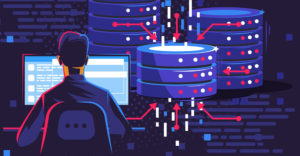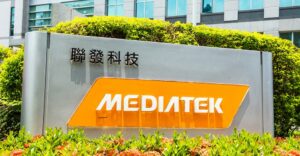Selecting the best computer for your business can be a straightforward process if you plan ahead. Check out these factors to make the most of your purchase. Pro Tip: Bargain prices should not be the deciding factor.
If you run a small business or work from home, you might not need a dedicated business computer with high-end features you never use. However, if you need to purchase a new computer system for an office environment, determining what best fits that space’s needs will help you select the ideal office computing solution.
A consumer-grade machine can be a good choice if the business usage differs little from what consumers normally do with a computer. However, business-grade gear may be your only reasonable option if your daily business tasks require heavy-duty operations. If so, here is how to make the best choice.
That assessment should consider whether the needed software is available via a cloud connection. If it is, almost any machine you buy can access it via a web browser. But if you must run the software locally, your new computer will do much of the heavy lifting.
Initial Check: Power User Requirements
Power users run specialized, high-powered applications that need advanced processing ability. Do not skimp on the configuration if you are in the power user category. Shift your focus to high-quality business computers.
Store-grade consumer equipment is not always designed to withstand that level of always-on service. Internal components such as hard drive storage and power units are often the first to fail under these conditions. Moisture and dust-resistant cases can be vital to sustaining mission-critical PCs.
Larger companies have access to IT-based buying options from major manufacturers. Smaller firms and small business owners are often better served by ordering from major manufacturers or supply houses because they provide set-up and tech support services through business accounts.
Other than extended warranty offers and Geek Squad-style repair services, big box stores and digital marketplaces offer little else for business purchases.
Desktop vs. Laptop for Business Needs
Whether you opt for a desktop or laptop depends entirely on your working environment and mobility needs. Today’s laptops offer convenience and performance as desktop replacements, and they have mostly buried the portability versus power debates.
Laptop computers used to be considered inferior for business use because they lacked the hardware quality found only in bigger and heavier desktop designs. That is no longer the case. Advanced technology has eliminated much of the gap that once distinguished the power and capability of desktops from laptop computers.
In general, buying desktop PCs for your business may only make sense for office-bound workers. Laptops can provide flexibility in workspace design and flexible workplace locations.
Screen size is no longer a purchase detriment. When plugged into a large desktop monitor, a smaller-screen laptop equals or exceeds the productivity potential of big desktop boxes.
Speed and Efficiency Factors for Business PCs
When assessing hardware options for office use, prioritize two crucial specifications: on-board storage and processing power. Businesses utilizing cloud storage and software-as-a-service (SaaS) applications might find it viable to adjust these specifications to align with budgetary constraints.
The central processing unit (CPU) is critical in defining a computer’s operational speed and multitasking capabilities. The efficiency of a CPU is mainly determined by two factors: its clock speed, measured in GHz, and the number of cores it possesses. A higher clock speed and more cores equate to improved performance and speed.
Furthermore, a CPU’s number of cores and threads enhances its multitasking ability, enabling it to handle multiple tasks concurrently. This capability is vital for applications that demand high levels of multitasking.
Less important in today’s market is having Intel chips inside. Computers with AMD processors generally cost several hundred dollars less without compromising quality. The specific processor used by either manufacturer is more important to consider. Check out product tests to see which ones outperform others and choose accordingly.
Choosing the Right Processor
A dual-core processor usually suffices for basic office tasks, striking a balance between cost and performance efficiency. However, quad-core and octa-core processors are preferable for demanding tasks involving data processing, graphic design, or extensive spreadsheet calculations. These higher-spec processors significantly enhance performance, making them preferable for more intensive applications.
The computer’s performance is also related to its amount of random-access memory (RAM). The more RAM your computer has, the more things it can keep in memory at once, making it run faster. Not all RAM is created equal. DDR4 RAM is newer and faster than DDR3 RAM. It is also more expensive, but it is worth the cost.
Check if the computer you want to buy lets you upgrade RAM. On many computer models, you can order memory upgrades at purchase or swap in additional RAM chips to increase it later. Having more RAM improves the overall performance of slower processors. You can trade off a slower CPU in favor of more RAM to adjust the purchase cost.
Running Windows 11? Don’t Be RAM Shy
The predominant computer systems in business offices run Microsoft Windows 10 or 11. Both require more memory than earlier Windows versions, which ran reasonably well on only 4GB.
Ensure you choose computers with sufficient RAM. Many consumers overlook the importance of additional RAM when purchasing a new computer, a critical oversight for business use that can be a deal-breaker.
A minimum of 8GB of RAM is essential for optimal performance in business applications; however, capacities of 12GB, 16GB, or even 32GB are significantly more effective and desirable for handling more demanding tasks. Therefore, it’s advisable not to compromise on RAM capacity.
Apple vs. Windows: Business Buying Considerations
If you prefer Apple computers, the CPU and RAM configurations are standardized, making the buying options more straightforward, yet limited, for desktop and laptop models.
It’s important to note that upgrading Apple’s CPU and RAM configurations after purchase can be challenging, if not impossible. Therefore, choosing the suitable configuration at the time of sale is crucial, as Apple advises buyers to carefully assess their needs before deciding.
In contrast, Windows desktop and laptop PCs offer more flexibility for upgrades, are generally less costly, and provide a broader range of options. If you are deciding between Windows and macOS options, Windows PCs are the less expensive option.
Storage Size for Better Business Efficiency
Depending on your company’s record-keeping practices and lack of cloud services, data and application storage might be a critical factor. Be picky about the type of storage hardware the computer you buy has. How fast it transfers data from onboard storage components affects its overall performance.
Modern computers offer two primary storage options: hard disk drives (HDDs) and solid-state drives (SSDs). While an older technology, HDDs provide a cost-effective solution for acquiring larger storage capacities. Conversely, SSDs, known for their compactness and speed, provide a durable and faster storage solution, albeit at a higher cost, which their longevity and performance benefits can justify.
Hard drives can be as small as 128GB and as large as 2TB. Business use quickly consumes between 500GB and 1TB. Do not consider any storage drive under 250GB in a desktop or laptop computer for business.
Monitor the Viewing Screen for Productivity Purposes
When selecting monitors for desktop computers or screens for laptops, it’s essential to consider size, resolution, and brightness to foster a productive and eye-friendly work environment. Brightness, measured in nits, is particularly crucial in well-lit office settings, where a minimum brightness of 300 nits can compensate for ambient light.
Larger monitors reduce the need to scroll often. The minimum size to consider for a desktop system is 21 inches, according to productivity pros. But go bigger if you can. Get a high-definition (HD) monitor as a minimum choice point. Consider 4K, 5K, and 8K configurations for more intense office needs.
Consider adopting a dual-monitor setup to enhance workspace efficiency. Connecting a large desktop monitor to a laptop can be a productivity asset by providing a more extensive and flexible viewing area.
Final Points to Consider When Buying a Business PC
Especially in business circles, buying a new computer does not involve considering operating system changes. If a company is already invested in using Microsoft Windows or Apple gear, that is what the new computer runs.
However, SMBs and small office environments often miss the opportunity to change computing directions when buying computers. Even leaders at larger organizations should consider the less-costly options of installing the free, open-source Linux operating system on existing computers since many larger companies are already vested in using Linux for cloud services and on-site server operations.
More of that Linux adoption needs to find its way into corporate offices to handle daily office workloads. Running the Linux operating system on a new or old computer provides the ultimate computing flexibility.
The same argument exists for using Chromebooks with their web-browser interface. That shift involves much less costly hardware and gives organizations the option to run both Apple and Windows software, as well as mobile Android apps, which are already a mainstream reality for consumers.
Check out our computer buying guide for consumers for more insights on how to buy a new computer and the range of operating system options.
Suggest a Topic
Is there a tech tutorial you’d like to see featured?
Email your ideas to me, and I’ll consider them for a future column.
And use the Reader Comments feature below to provide your input!






















































